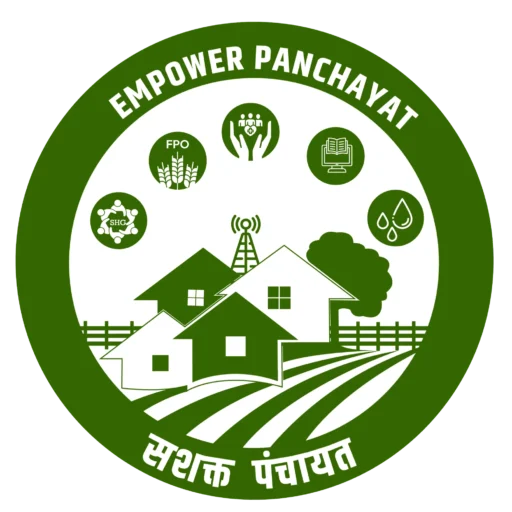India stands at a perilous crossroads, grappling with the twin crises of acute water scarcity and deep agrarian distress. For decades, the nation’s agricultural policy, born from the Green Revolution, has been a Faustian bargain. In solving hunger, it sowed the seeds of an ecological disaster, leaving behind hardened soils, depleted aquifers, and indebted farmers. The frantic search for a solution has led many to champion a shift to “organic,” but this is a costly and ill-fitting detour.
The real, scalable, and sustainable solution lies in a more profound paradigm shift: away from a model of external inputs and towards an Indian-centric system of Natural Farming. It is a philosophy that promises not only to heal our lands and solve our water crisis but to restore dignity and profitability to the Indian farmer.
The Flawed Promise: Why ‘Organic’ is Not the Answer for India
On the surface, organic farming seems like the ideal alternative to its chemical-intensive counterpart. However, a closer look reveals it to be a system of input substitution, merely replacing chemical bags with more expensive, certified organic ones. This model is fundamentally unsuited for transforming Indian agriculture for two critical reasons:
Commercially Unviable for the Majority: The organic model is built on a framework of costly inputs and expensive third-party certifications. These standards, often designed with Western markets in mind, impose a heavy financial burden that is simply untenable for the vast majority of India’s small and marginal farmers. It forces farmers to remain dependent on an external market for approved inputs and pushes them to chase premium prices that are often inaccessible, making it a niche market solution, not a national one.
Ecologically Misaligned: A “one-size-fits-all” certification standard fails to respect India’s immense agro-climatic diversity. Prescribing a uniform set of practices from the arid plains of Rajasthan to the humid coasts of Kerala ignores the wisdom of local ecosystems. It stifles the very adaptability that is crucial for building resilient farming systems.
In essence, certified organic farming is not the ecological or commercial panacea India needs. It risks creating a new form of dependency, failing to address the core issue: our soils are not just hungry, they are dead. The solution is not to simply change the diet, but to bring the soil back to life.
Section 1: The Earthworm’s Verdict: Choosing the Right Engineers for the Soil
The foundational difference between the commercial organic approach and Natural Farming is revealed in the very lifeblood of the soil: the earthworm.
The commercial organic system largely relies on vermicompost, a potent fertilizer created by specialist, surface-dwelling earthworms like the Red Wiggler (Eisenia fetida). These worms are best thought of as efficient factory workers. They are brought to organic waste in a controlled environment to produce a nutrient-rich product. However, they are not the creatures that build deep, healthy soil in a field.
Natural Farming, in contrast, focuses on nurturing the native, soil-dwelling earthworms through on-farm preparations like those made from local cow dung. These native worms are the civil engineers of the soil. They are the deep-burrowing architects that create a thriving underground ecosystem. Rather than importing factory workers, this approach empowers the local engineering crew that has evolved over millennia to perfectly suit the local conditions.
Rebuilding Our Natural Reservoirs: The Natural Farming Solution to the Water Crisis
The choice between these two types of earthworms directly correlates to our ability to solve the water crisis. The hard, compacted soils left by decades of chemical farming are hydrophobic—they repel water, leading to massive runoff and evaporation. It is the work of the native “civil engineer” earthworms that reverses this damage.
Here’s how Natural Farming turns barren fields into hydro-geological sponges:
Deep, Vertical Channels: Deep-burrowing native worms create a network of permanent vertical channels that can extend several feet into the ground. These act as natural super-highways, funneling precious rainwater deep into the subsoil, recharging aquifers from the top-down.
Enhanced Porosity: The constant activity of these worms creates a web of macropores, dramatically increasing the soil’s overall porosity and its capacity to absorb and hold water like a sponge.
The specialist worms of vermicomposting do not perform this vital, in-field engineering. The fertilizer they create helps, but it is the native worms, nourished by on-farm cow dung preparations, that build the infrastructure for natural rainwater harvesting. By reviving this workforce, Natural Farming directly addresses the primary cause of the water crisis: the inability of our land to absorb and retain water.
Embracing Diversity Over Standardization: The True Strength of Natural Farming
The biggest criticism of Natural Farming—its lack of rigid standardization—is, in fact, its greatest strength. Nature’s beauty and resilience lie in its diversity, not in monocultural uniformity.
Organic farming imposes a standard. Natural Farming offers a set of principles:
Jeevamrutha: Using microbial cultures from native cow dung and urine to kick-start soil life.
Beejamrutha: Treating seeds with protective microbial coatings.
Acchadana (Mulching): Keeping the soil covered with crop residues to conserve moisture and provide food for microbes.
Whapasa (Soil Aeration): Fostering a healthy balance of air and water in the soil, making it resilient to both drought and flood.
These principles are not a rigid prescription but an adaptable framework. They allow a farmer in any part of India to work with their local resources—their local soil, their local climate, their local plants, and their local cattle—to create a thriving farm. This inherent flexibility makes Natural Farming infinitely more scalable and appropriate for India’s diverse farming communities than any top-down, standardized system.
In conclusion, India does not need to import agricultural philosophies or expensive inputs. The solution to our water crisis and the path to a profitable, resilient, and dignified agricultural future lies beneath our feet. By rejecting the costly detours and embracing the principles of Natural Farming, we can empower our farmers, revive our soils, recharge our aquifers, and truly secure our nation’s future.


